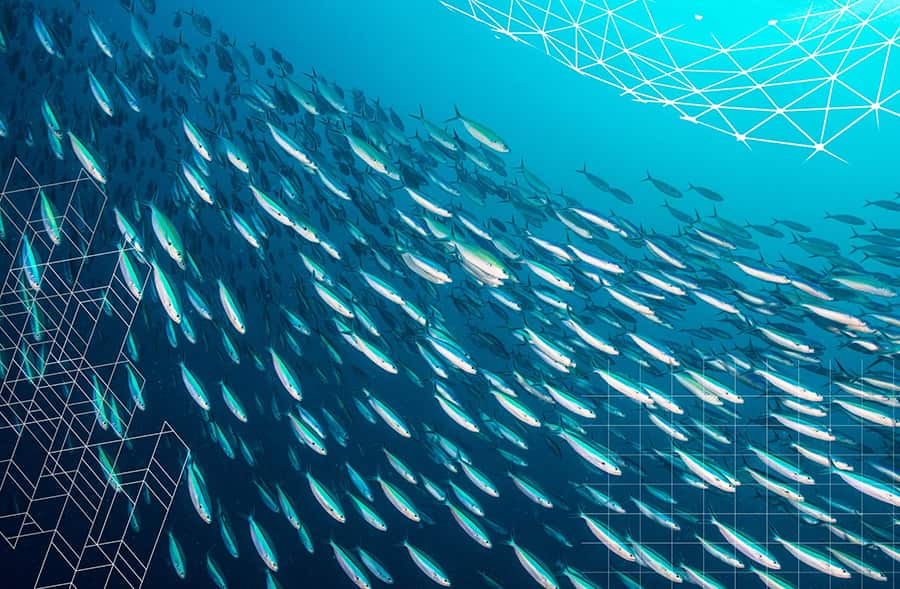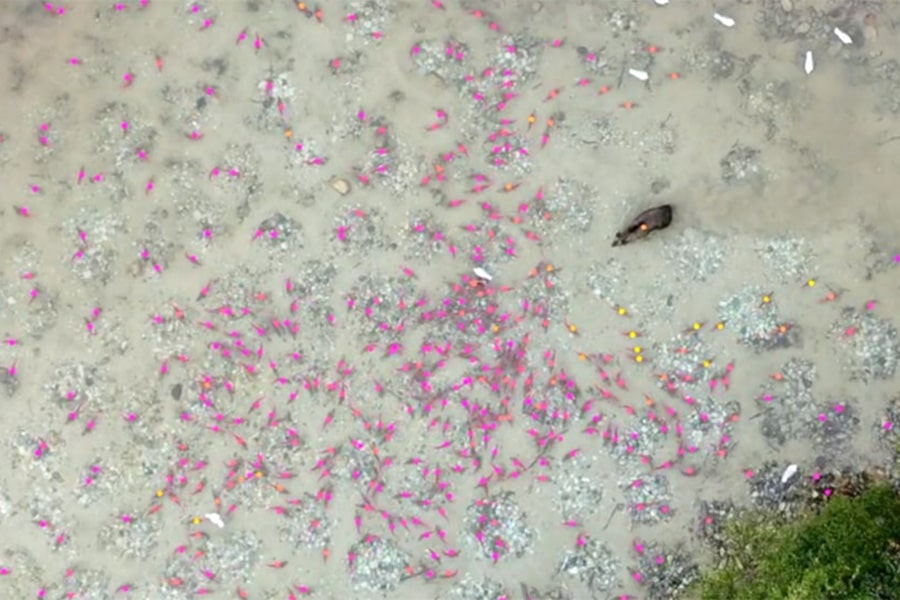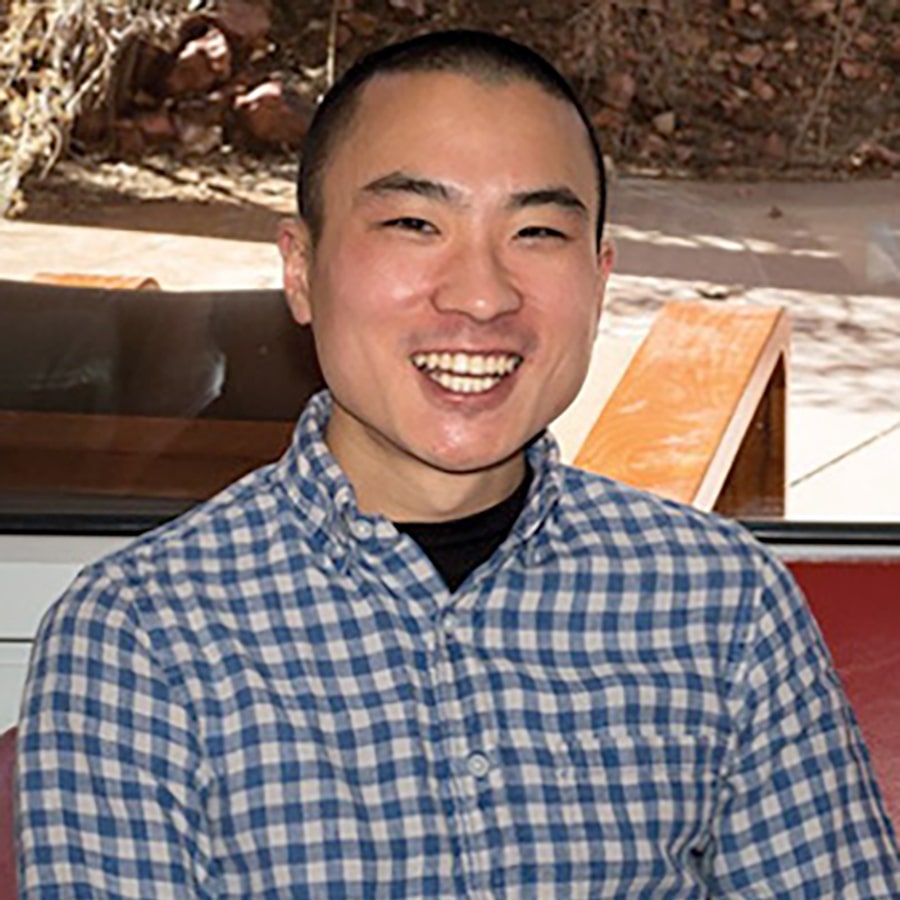- Home
- News
- Recent News
- Collective Decision-Making
Collective Decision-Making
How does one make sense of a complicated system?

Traditionally, scientists take apart such a system and study each of its components in detail—this is the reductionist approach. However, we are realizing that many natural phenomena, particularly in biology, are more than the sum of their parts. For example, it is not possible to understand consciousness by studying a single neuron or the V formation of migrating Canada geese by studying a single bird. We call these complex systems, and fascinating emergent properties (like consciousness or group structure) often arise from the multitude of interactions between the individual components. To have any hope of understanding these emergent properties, we need to study these systems in all of their complicated glory.
Our lab is particularly interested in how group-living animals make decisions together. From the mummichog fish schools swimming in Savin Hill Cove, to the ant trails seeking out bits of food outside of the Campus Center, to the geese flying overhead, such collective decision-making abounds across the UMass Boston campus. Reaching a consensus is important for the simple purpose of staying together, but there is a more intriguing possibility, too: animals in groups may be able to make better decisions together than they could alone. This is because each individual comes with its own sensory information and past experiences, so a collective, in theory, could pool its information together and make a more informed decision, a phenomenon called the “wisdom of crowds.”

A brown bear preparing to hunt a group of sockeye salmon at our field site. The bear and each salmon labeled with a colored dot which corresponds to the speed to which animal is traveling, the result of a deep-learning automated tracking algorithm. Image By: Albert Kao and Ben Koger
We study collective decision-making at UMass Boston in three ways. First, we develop mathematical models of how we think social animals make decisions and run computer simulations to generate predictions of what real animal groups might do in different situations. Then, we test these theoretical predictions in our lab. Currently, we have been focused on a small minnow species, the golden shiner, which we house by the thousands on campus. Our lab—including several UMass Boston undergraduates—have built a custom experimental set-up to study these fish, which allows us to stimulate the fish at particular times, record their behavior with an overhead camera, and follow their movements using state-of-the-art deep-learning tracking algorithms. Lastly, we study collective decision-making in the field by recording the behavior of migrating sockeye salmon in Alaska, which move together hundreds of miles from the ocean back to the same ponds that they were born in years ago. Together, these different methodologies (models, lab experiments, and field observations) help us to paint a picture of how animals in groups make decisions together.
Collective decision-making is relevant to countless species across the tree of life, from herds of elephants, to schools of herring, and even to microscopic bacterial clusters. However, it is also highly relevant to us humans, too. We exchange information and opinions with our local community and even globally through social media, and we make collective decisions when we vote or when public opinion coalesces around an idea. Indeed, by learning how animal groups make decisions—using strategies that were honed over millions of years of evolution—we may gain new ideas about how to improve our own information sharing systems.

A school of golden shiner fish emerge from their shelter to explore the experimental arena in our lab in the Integrated Sciences Complex at UMass Boston. Image By: Fritz Francisco and Shoubhik Banerjee

Assistant Professor of Biology